HyeonsuB. Kang
[News!] BioSpark was featured in a
Washington Post article by David Ovalle titled
“Is AI rewiring our minds? Scientists probe cognitive cost of chatbots.” The article explores the nuanced research behind viral claims that AI is making us lazier or less intelligent. Read it here:
washingtonpost.com.
[News!] I started as a Senior Applied Scientist at Microsoft! (
Link)
[News!] BioSpark was awarded a Best Paper Honorable Mention at CHI 2025!
[News!] Nouran's work on meronymous interaction received a Best Paper Award at CHI 2024!
[News!] Nouran's work on meronymous interaction was featured on
MIT News!
Industry Bio |
Academic Bio
I'm a Senior Applied Scientist at Microsoft (San Francisco Bay Area) working in AI research in the PowerPoint organization, developing multimodal agentic
systems for presentation generation and editing, and leading evaluation
design for real-world use.
I hold a Ph.D. in Human-Computer Interaction from Carnegie Mellon University (CMU), where I specialized in ML- and LLM-powered interactive systems that enhance human–AI co-creativity.
Research profile. I'm a Human-AI interaction researcher building agentic systems that combine structural reasoning with test-time compute to amplify human + AI problem-solving. I integrate cognitive representations with LLM training and evaluations to improve creativity, knowledge synthesis, and decision support across domains (from scientific discovery to design).
Research agenda.
- Schema-guided analogy & compositional generalization: learning and applying purpose-mechanism schemas to transfer solutions across domains.
- Structured exploration for ideation: tree-of-thought style search with tool use to generate diverse, high-quality options.
- Threaded knowledge synthesis: long-horizon agents with memory, retrieval, and context routing for multi-step workflows.
- Agent evaluations & safety: task-grounded benchmarks for planning, tool use, reliability, hallucination control, and harmful-behavior resilience.
I've collaborated with the Toyota Research Institute, the
Allen Institute for AI (AI2)
, and MIT to design and deploy AI-driven systems with real-world
impact. At AI2, I co-designed Semantic Scholar's improved paper-alert
emails, led engagement analyses that guided their launch, and published
multiple research papers with AI2 collaborators. Additionally, I partnered
with
Conservation X Labs
to develop team-formation algorithms for global open-innovation
contests offering over $2 million in prize funding.
My research is now required reading at Virginia Tech and CMU. I've received multiple awards, including a Best Paper Award at ACM CHI (2024), a Best Paper Honorable Mention Award at ACM CHI (2025), and a Google Cloud Innovator Award (2021).
Hyeonsu Kang (Ph.D., Carnegie Mellon University) is a Human-AI Interaction researcher specializing in enhancing cognitive efficiency and creativity through collaborative AI systems.
His work combines cognitive theories with cutting-edge AI to improve problem-solving and ideation for both experts and novices across various domains.
Kang's research spans three key areas:
- 1. Enhancing outside-the-box thinking for domain experts and novices
[TOCHI'22,
CHI'22,
NAACL'22,
CHI'25 🥇 & NeurIPS'23 & CHI'24, AAAI'24]
- 2. Facilitating effective discovery and synthesis of relevant prior knowledge
[UIST'23,
CHI'23,
UIST'22,
CHI'22,
CHI'24]
- 3. Promoting social learning and idea development through augmented feedback and expertise exchange
[CHI'18,
UIST'17,
Collective Intelligence'19, CHI'24 🏆]
His work has resulted in real-world impacts, including improving personalized email alerts for scientific research papers (deployed at the
Allen Institute for Artificial Intelligence) and contributing to the allocation of $2M in prize money for global conservation innovation contests (
Conservation X Labs, a conservation-focused non-profit).
His research has fostered collaborations with professionals across various disciplines (e.g., engineers, designers, scientists, and teachers) and organizations (e.g., MIT, the University of Maryland, the University of Washington, and KAIST, and industry partners such as
Conservation X, the
Allen Institute for Artificial Intelligence, and the
Toyota Research Institute).
Kang's contributions have been recognized with a
best paper award at ACM CHI 2024, a
best paper honorable mention award at ACM CHI 2025, and a Google Cloud Innovator Award (2021).
His work has been published in premier NLP and HCI conferences and journals, including ACM CHI, UIST, TOCHI, AAAI, NAACL, and NeurIPS.
His research has been funded by the National Science Foundation, the Allen Institute for Artificial Intelligence, the Office of Naval Research, the Toyota Research Institute, and Google Cloud.
Prior to his Ph.D., Kang received his BS in Computer Science and Engineering at
Seoul National University.
He also worked and interned at MIT, the Allen Institute for AI, UC San Diego, and Tableau Software.
He was previously supported by the South Korean National Scholarship for Science and Engineering.
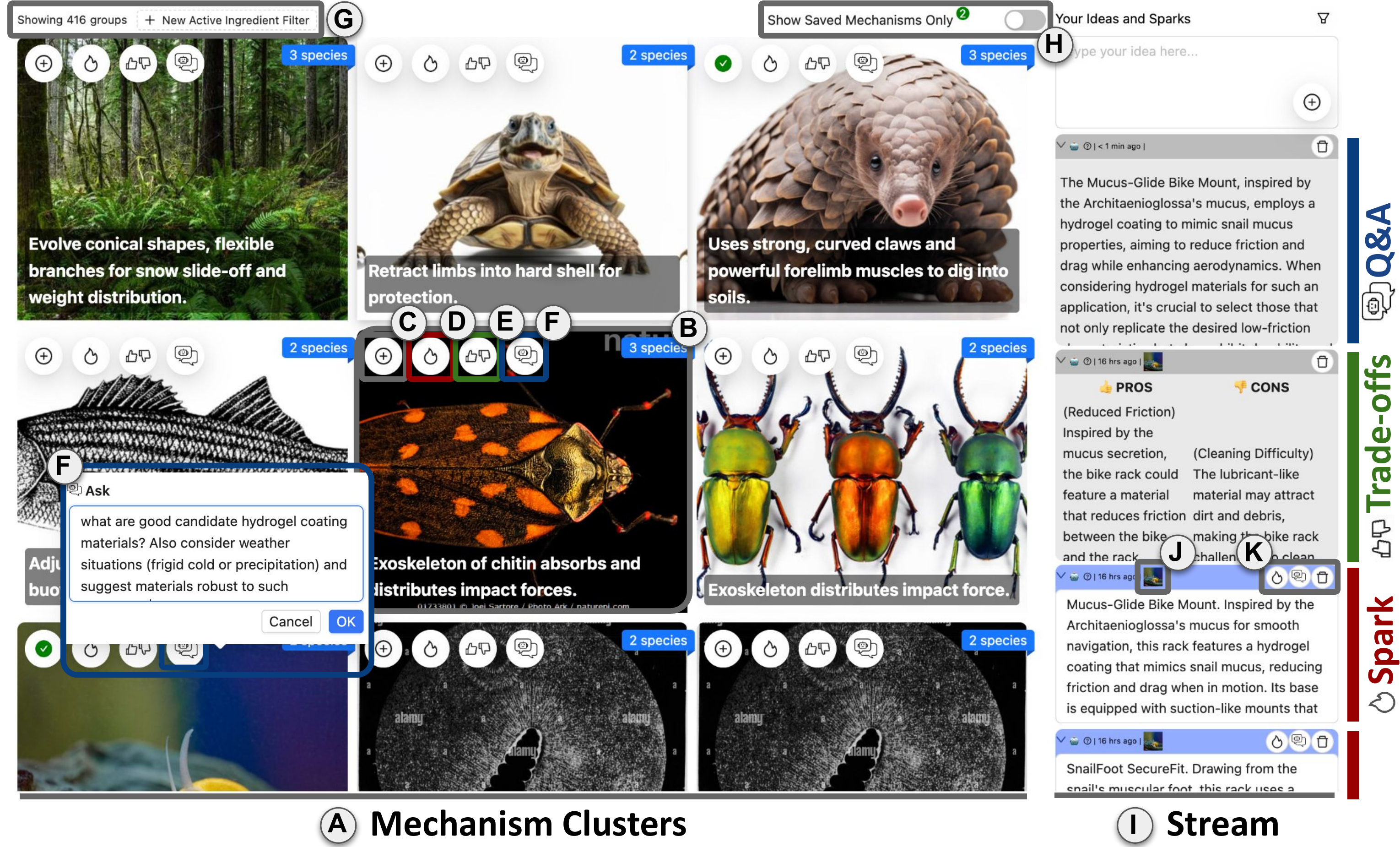 🥇 CHI 2025
🥇 CHI 2025
Hyeonsu B. Kang, David Chuan-en Lin, Yan-Ying Chen, Matthew K. Hong, Nicholas Martelaro, Aniket Kittur
CHI 2025 (Best Paper Honorable Mention 🥇)
[
PDF]
We present BioSpark, a system for analogical innovation designed to act as a creativity partner in reducing the cognitive effort in finding, mapping, and creatively adapting diverse inspirations. While prior approaches have focused on initial stages of finding inspirations, BioSpark uses LLMs embedded in a familiar, visual, Pinterest-like interface to go beyond inspiration to supporting users in identifying the key solution mechanisms, transferring them to the problem domain, considering tradeoffs, and elaborating on details and characteristics. To accomplish this BioSpark introduces several novel contributions, including a tree-of-life enabled approach for generating relevant and diverse inspirations, as well as AI-powered cards including 'Sparks' for analogical transfer; 'Trade-offs' for considering pros and cons; and 'Q&A' for deeper elaboration. We evaluated BioSpark through workshops with professional designers and a controlled user study, finding that using BioSpark led to a greater number of generated ideas; those ideas being rated higher in creative quality; and more diversity in terms of biological inspirations used than a control condition. Our results suggest new avenues for creativity support tools embedding AI in familiar interaction paradigms for designer workflows.
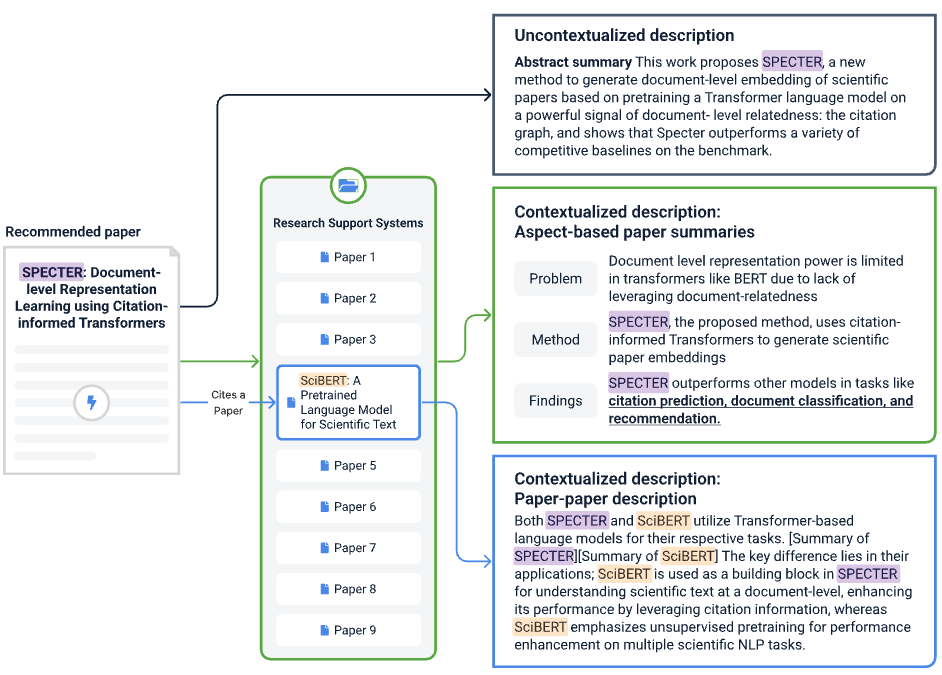 CHI 2024
CHI 2024
Yoonjoo Lee, Hyeonsu B. Kang, Matthew Latzke, Juho Kim, Jonathan Bragg, Joseph Chee Chang, Pao Siangliulue
CHI 2024
[
PDF
·
ACM DL
·
BibTeX
·
ACM Ref
·
EndNote]
With the rapid growth of scholarly archives, researchers subscribe to "paper alert" systems that periodically provide them with recommendations of recently published papers that are similar to previously collected papers. However, researchers sometimes struggle to make sense of nuanced connections between recommended papers and their own research context, as existing systems only present paper titles and abstracts. To help researchers spot these connections, we present PaperWeaver, an enriched paper alerts system that provides contextualized text descriptions of recommended papers based on user-collected papers. PaperWeaver employs a computational method based on Large Language Models (LLMs) to infer users' research interests from their collected papers, extract context-specific aspects of papers, and compare recommended and collected papers on these aspects. Our user study (N=15) showed that participants using PaperWeaver were able to better understand the relevance of recommended papers and triage them more confidently when compared to a baseline that presented the related work sections from recommended papers.
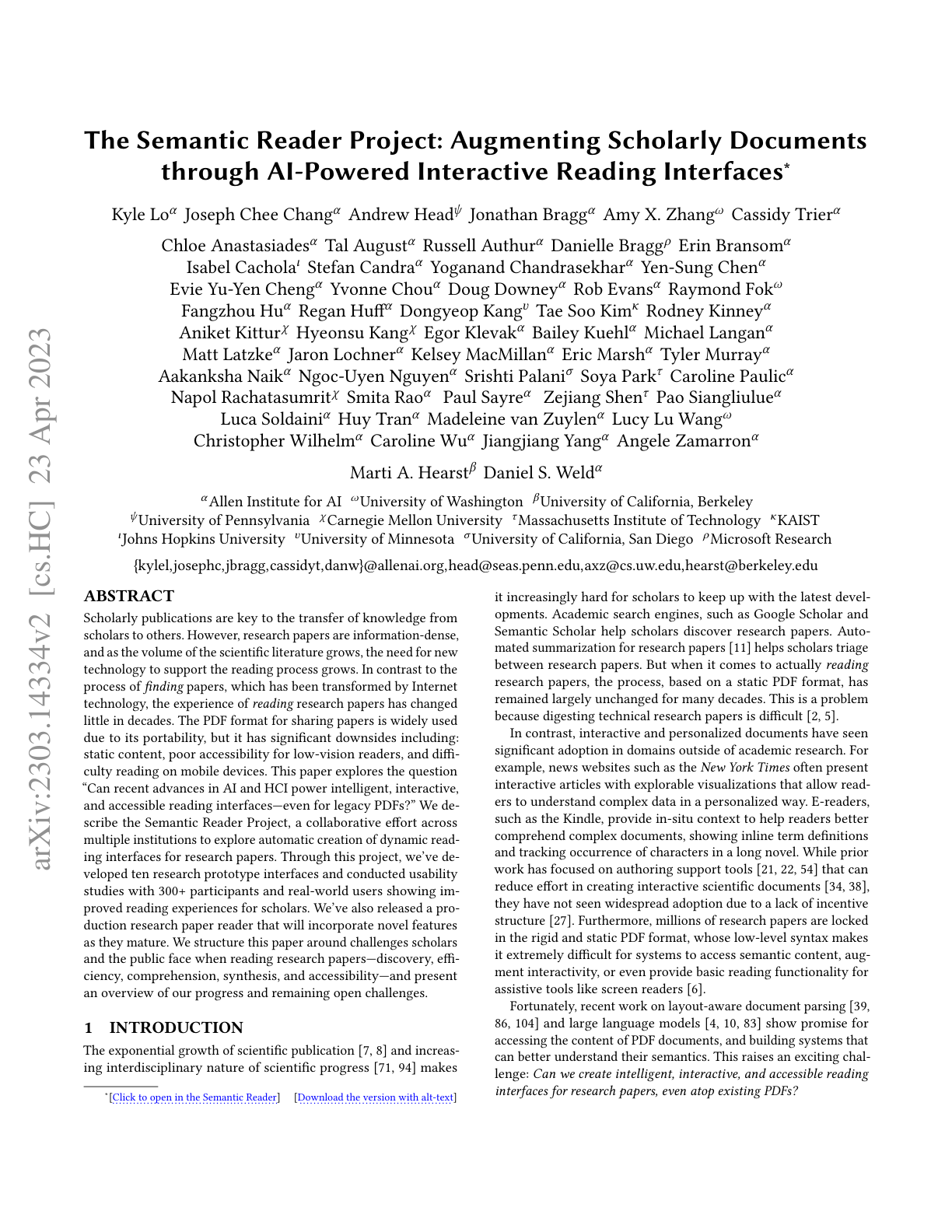 CACM 2024
CACM 2024
Kyle Lo, Joseph C. Chang, Andrew Head et al. (including Hyeonsu B. Kang)
Communications of the ACM (2024)
[
PDF
·
ACM DL
·
BibTeX
·
ACM Ref
·
EndNote]
Scholarly publications are key to the transfer of knowledge from scholars to others. However, research papers are information-dense, and as the volume of the scientific literature grows, the greater the need for new technology to support scholars. In contrast to the process of finding papers, which has been transformed by Internet technology, the experience of reading research papers has changed little in decades. For instance, the PDF format for sharing papers remains widely used due to its portability but has significant downsides, inter alia, static content and poor accessibility for low-vision readers. This paper explores the question "Can recent advances in AI and HCI power intelligent, interactive, and accessible reading interfaces - even for legacy PDFs?" We describe the Semantic Reader Project, a collaborative effort across multiple institutions to explore automatic creation of dynamic reading interfaces for research papers. Through this project, we've developed a collection of novel reading interfaces and evaluated them with study participants and real-world users to show improved reading experiences for scholars. We've also released a production research paper reading interface that will continuously incorporate novel features from our research as they mature. We structure this paper around five key opportunities for AI assistance in scholarly reading - discovery, efficiency, comprehension, synthesis, and accessibility - and present an overview of our progress and discuss remaining open challenges. Augmenting scholarly documents through AI-powered interactive reading interfaces.
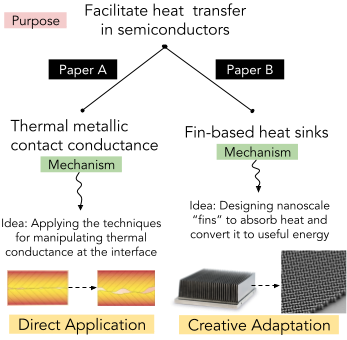 TOCHI 2022
TOCHI 2022
Hyeonsu B. Kang, Xin Qian, Tom Hope, Dafna Shahaf, Joel Chan, and Aniket Kittur
Analogies have been central to creative problem-solving throughout the history of science and technology. As the number of scientific papers continues to increase exponentially, there is a growing opportunity for finding diverse solutions to existing problems. However, realizing this potential requires the development of a means for searching through a large corpus that goes beyond surface matches and simple keywords. Here we contribute the first end-to-end system for analogical search on scientific papers and evaluate its effectiveness with scientists' own problems. Using a human-in-the-loop AI system as a probe we find that our system facilitates creative ideation, and that ideation success is mediated by an intermediate level of matching on the problem abstraction (i.e., high versus low). We also demonstrate a fully automated AI search engine that achieves a similar accuracy with the human-in-the-loop system. We conclude with design implications for enabling automated analogical inspiration engines to accelerate scientific innovation.
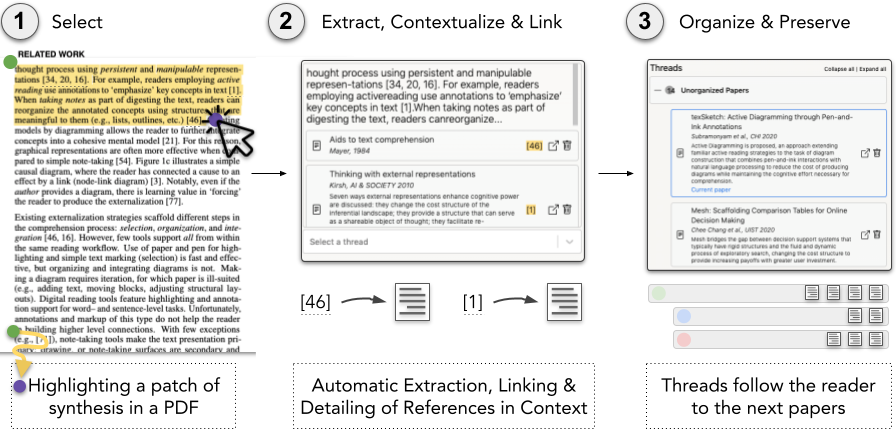 UIST 2022
UIST 2022
Hyeonsu B. Kang, Joseph Chee Chang, Yongsung Kim, Aniket Kittur
UIST 2022
[
PDF
·
ACM DL
·
BibTeX
·
ACM Ref
·
EndNote]
Reviewing the literature to understand relevant threads of past work is a critical part of research and vehicle for learning. However, as the scientific literature grows the challenges for users to find and make sense of the many different threads of research grow as well. Previous work has helped scholars to find and group papers with citation information or textual similarity using standalone tools or overview visualizations. Instead, in this work we explore a tool integrated into users' reading process that helps them with leveraging authors' existing summarization of threads, typically in introduction or related work sections, in order to situate their own work's contributions. To explore this we developed a prototype that supports efficient extraction and organization of threads along with supporting evidence as scientists read research articles. The system then recommends further relevant articles based on user-created threads. We evaluate the system in a lab study and find that it helps scientists to follow and curate research threads without breaking out of their flow of reading, collect relevant papers and clips, and discover interesting new articles to further grow threads.
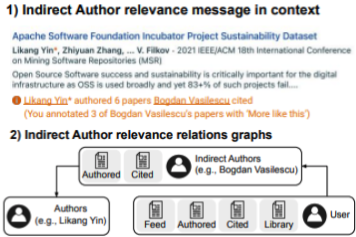 CHI 2022
CHI 2022
Hyeonsu B. Kang, Rafal Kocielnik, Andrew Head, Jiangjiang Yang, Matt Latzke, Aniket Kittur, Daniel Weld, Doug Downey, and Jonathan Bragg
CHI 2022
[
PDF
·
ACM DL
·
BibTeX
·
ACM Ref
·
EndNote]
Finding and engaging with the relevant scientific knowledge is foundational for intellectual progress in a society. Yet, with an exponential growth in publication rates, this becomes a challenging task. While personalized recommendations can help, they still may lack explanations of how certain papers are relevant and thus should be prioritized or attended to. To combat this, we developed a citation-based and two kinds of social relation-based approaches to boost user engagement with scholarly paper recommendations. For users who opted in, these approaches augmented paper recommendations included in email alerts with textual relevance descriptions underneath the recommendations. We evaluated our approaches in a randomized field experiment that ran for over two months and with 7,000+ users, and also in a controlled lab study (N=14) for deeper qualitative insights. We report on our findings and implications for the design of future approaches that aim to augment scholarly recommendations.
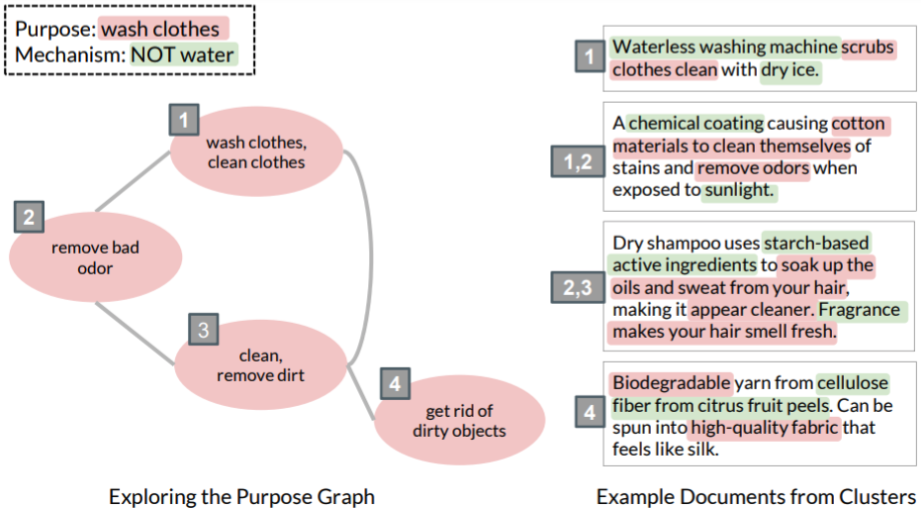 CHI 2022
CHI 2022
Tom Hope, Ronen Tamari, Hyeonsu Kang, Daniel Hershcovich, Joel Chan, Aniket Kittur, and Dafna Shahaf
CHI 2022
[
PDF
·
ACM DL
·
BibTeX
·
ACM Ref
·
EndNote]
We explore a novel representation for automatically breaking up product ideas described in natural language into fine-grained functional aspects. This representation can capture the core purposes and mechanisms in ideas, and support the backbone interactions (e.g., functional search of ideas, mapping and exploration of the design space around a focal problem) for augmenting human intelligence and accelerating the rate of innovation.
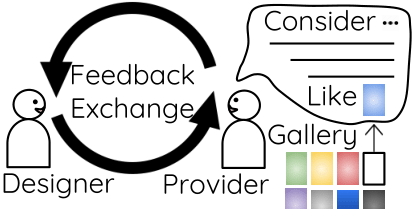 CHI 2018
CHI 2018
Hyeonsu B. Kang, Gabriel Amoako, Neil Sengupta, Steven Dow
CHI 2018
[
PDF
·
ACM DL
·
BibTeX
·
ACM Ref
·
EndNote]
“A picture is worth a thousand words.” We developed Paragon, a system that supports crowdworkers and peers during feedback exchange by enabling search of design examples that supplement the written feedback. In two lab studies, we found that i) feedback providers select poster examples that complement their feedback and align with a provided rubric and that ii) feedback providers give significantly more specific, actionable, and novel input when using an example-centric approach, as opposed to text alone.
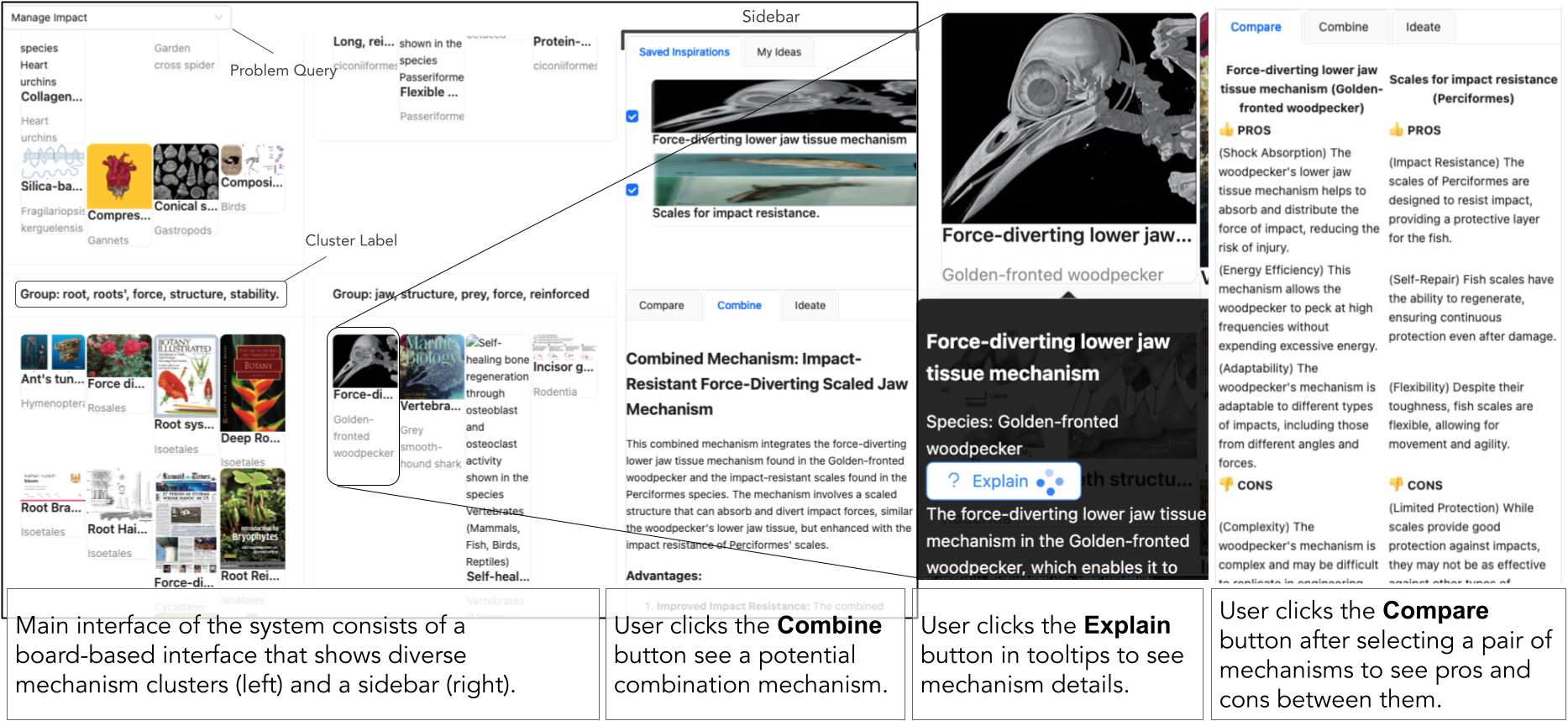 NeurIPS 2023
NeurIPS 2023
Hyeonsu B. Kang, David Chuan-En Lin, Nikolas Martelaro, Aniket Kittur, Yan-Ying Chen, Matthew K. Hong
NeurIPS 2023 Creativity Workshop
[
Poster]
Nature is often used to inspire solutions for complex engineering problems, but achieving its full potential is challenging due to difficulties in discovering relevant analogies and synthesizing from them.
Here, we present an end-to-end system, BioSpark, that generates biological-analogical mechanisms and provides an interactive interface to comprehend and synthesize from them.
BioSpark pipeline starts with a small seed set of mechanisms and expands it using an iteratively constructed taxonomic hierarchies, overcoming data sparsity in manual expert curation and limited conceptual diversity in automated analogy generation via LLMs.
The interface helps designers with recognizing and understanding relevant analogs to design problems using four main interaction features.
We evaluate the biological-analogical mechanism generation pipeline and showcase the value of BioSpark through case studies.
We end with discussion and implications for future work in this area.
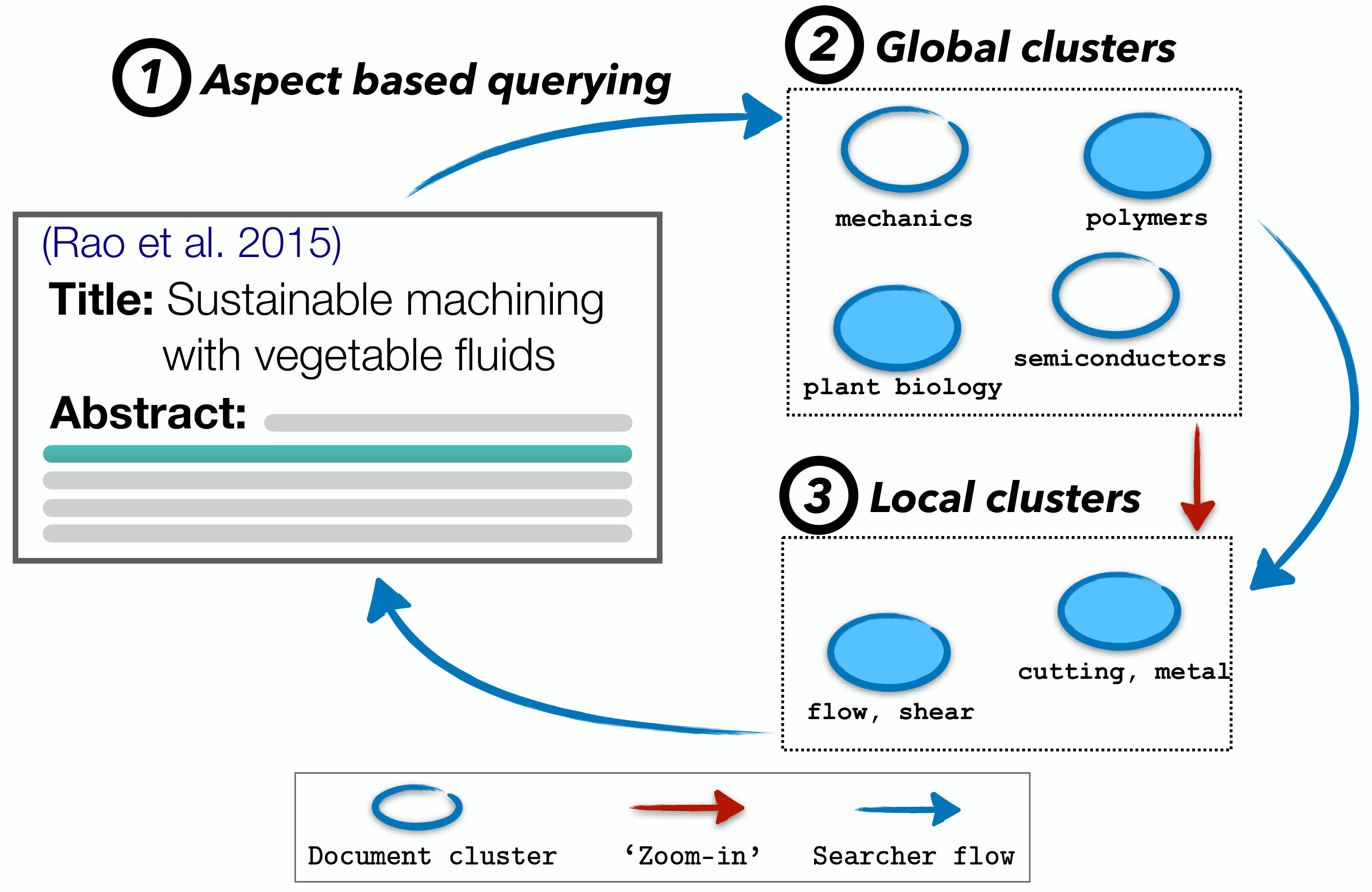 NAACL 2022
NAACL 2022
Hyeonsu B. Kang*, Sheshera Mysore*, Kevin Huang*, Haw-Shiuan Chang, Thorben Prein, Andrew McCallum, Aniket Kittur, Elsa Olivetti
NAACL 2022 Workshop
[
PDF
·
BibTeX]
Exposure to ideas in domains outside a scientist's own may benefit her in reformulating existing research problems in novel ways and discovering new application domains for existing solution ideas. While improved performance in scholarly search engines can help scientists efficiently identify relevant advances in domains they may already be familiar with, it may fall short of helping them explore diverse ideas outside such domains. In this paper we explore the design of systems aimed at augmenting the end-user ability in cross-domain exploration with flexible query specification. To this end, we develop an exploratory search system in which end-users can select a portion of text core to their interest from a paper abstract and retrieve papers that have a high similarity to the user-selected core aspect but differ in terms of domains. Furthermore, end-users can 'zoom in' to specific domain clusters to retrieve more papers from them and understand nuanced differences within the clusters. Our case studies with scientists uncover opportunities and design implications for systems aimed at facilitating cross-domain exploration and inspiration.
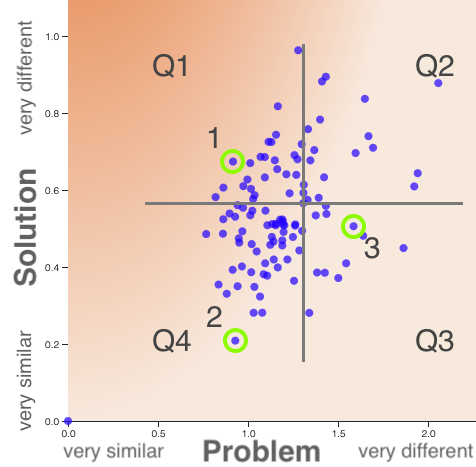 CI 2019
CI 2019
Matching Open Innovation Projects for Analogical Feedback Exchange
Hyeonsu Kang, Felicia Ng, Aniket Kittur
Collective Intelligence 2019
We developed an algorithm for matching teams in open innovation contests that tackle related conservataion challenges using diverse approaches, thereby encouraging the transfer of analogical inspirations between teams. To this end, our algorithm used pre-trained language models to encode the natural language text descriptions of team challenges and their solution approaches into a vector similarity space, then computed semantic similarity between them to systematically find teams tackling similar problems using diverse approaches, shown as a conducive mechanism for the transfer.
 NeurIPS 2025
NeurIPS 2025
 🥇 CHI 2025
🥇 CHI 2025
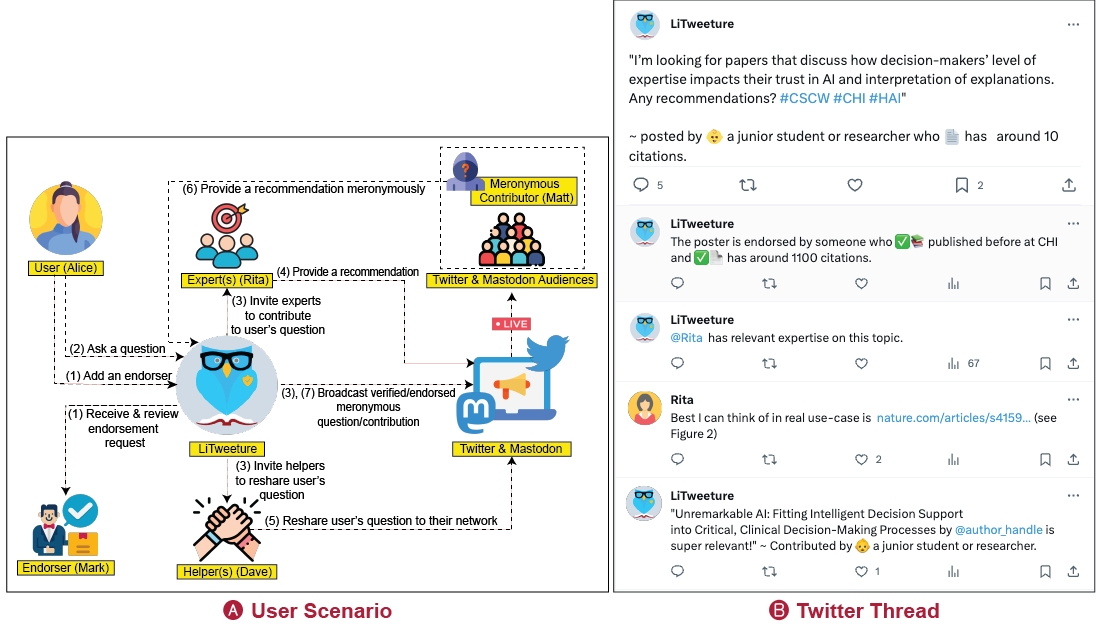 🏆 CHI 2024
🏆 CHI 2024
 CHI 2024
CHI 2024
 CACM 2024
CACM 2024
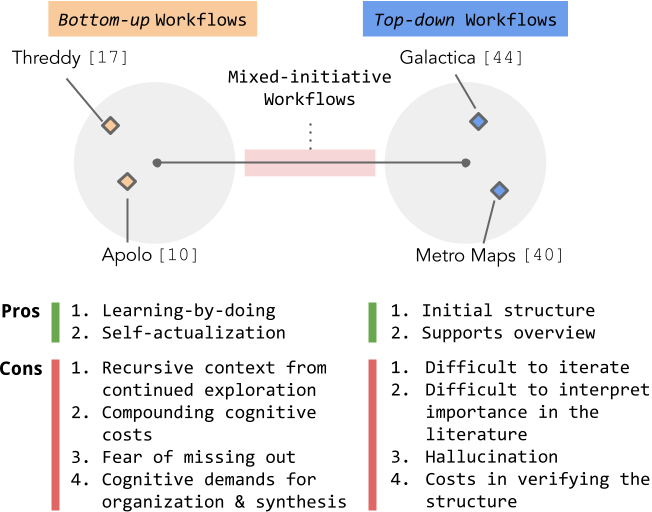 UIST 2023
UIST 2023
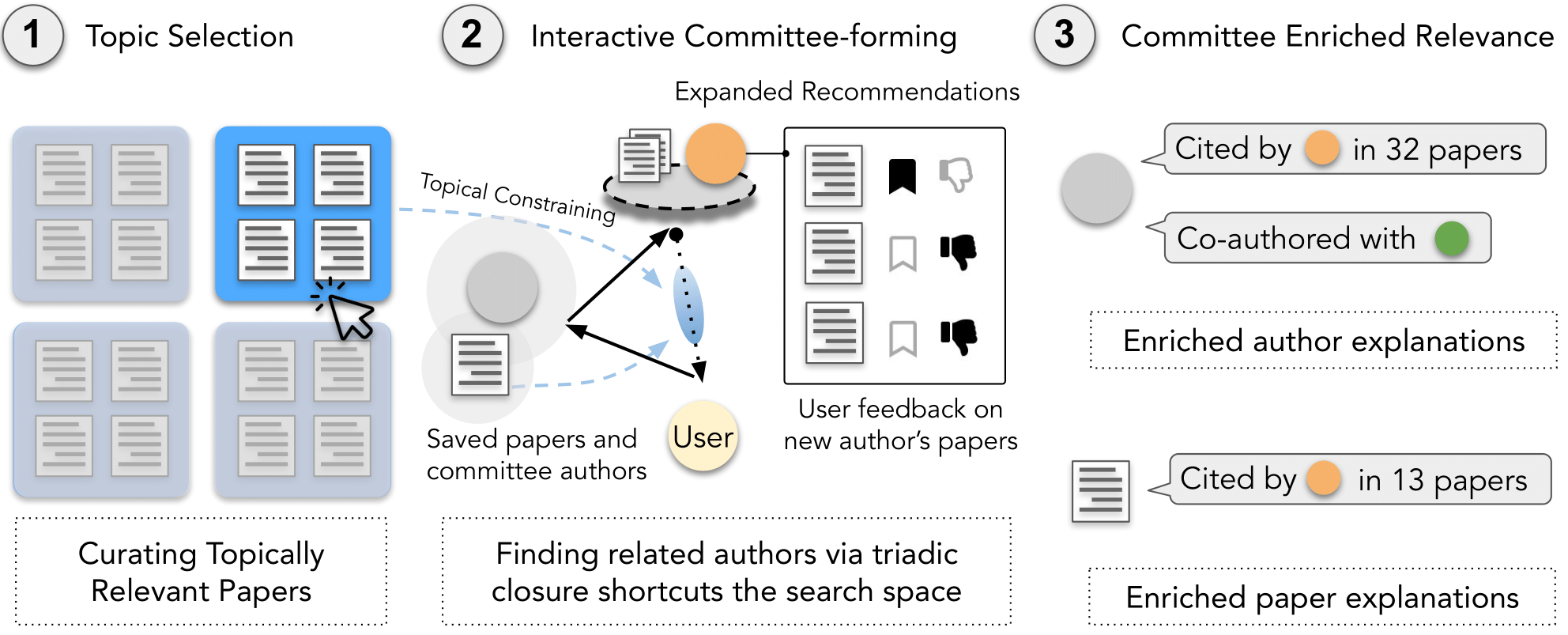 CHI 2023
CHI 2023
 TOCHI 2022
TOCHI 2022
 UIST 2022
UIST 2022
 CHI 2022
CHI 2022
 CHI 2022
CHI 2022
 CHI 2018
CHI 2018
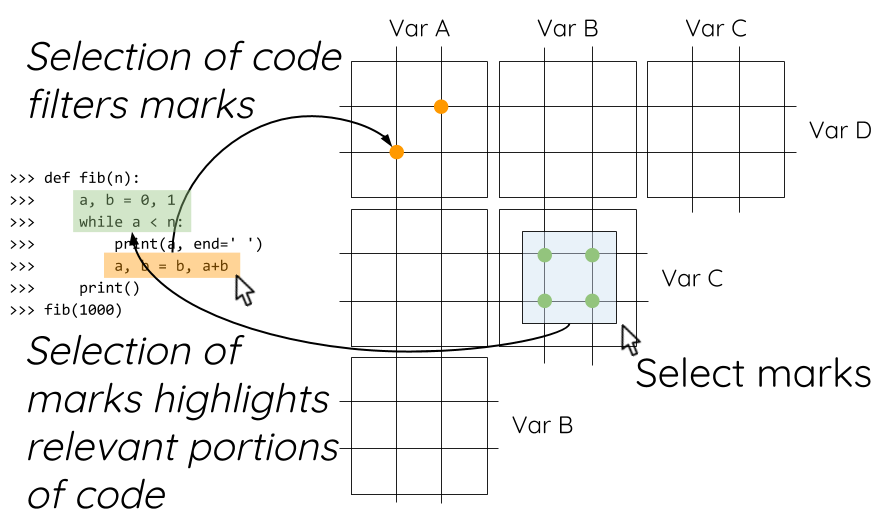 UIST 2017
UIST 2017
 NeurIPS 2023
NeurIPS 2023
 NAACL 2022
NAACL 2022
 CI 2019
CI 2019
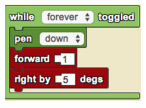 SIGPLAN 2018
SIGPLAN 2018
